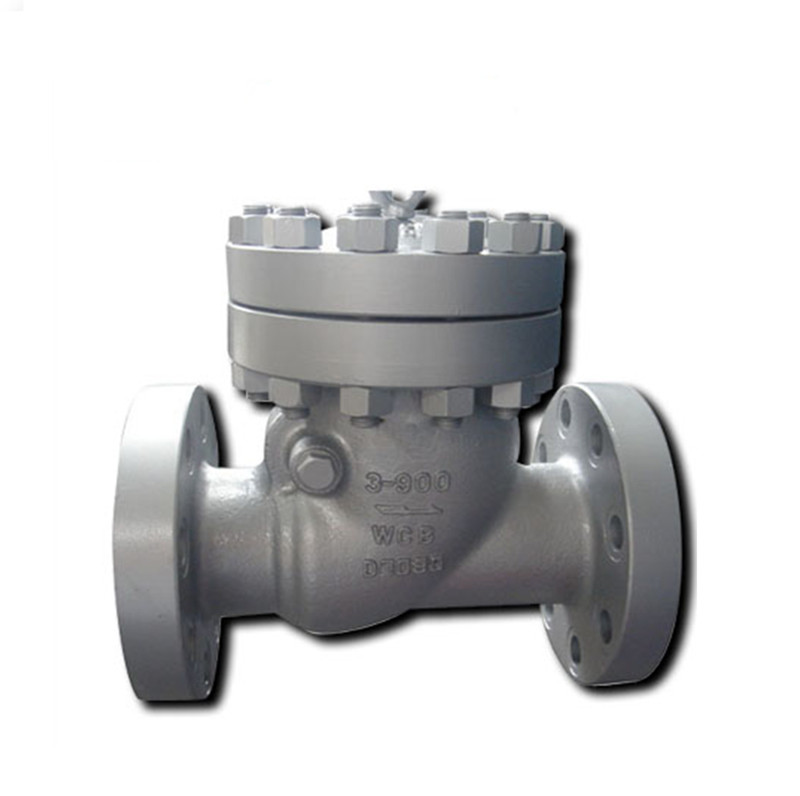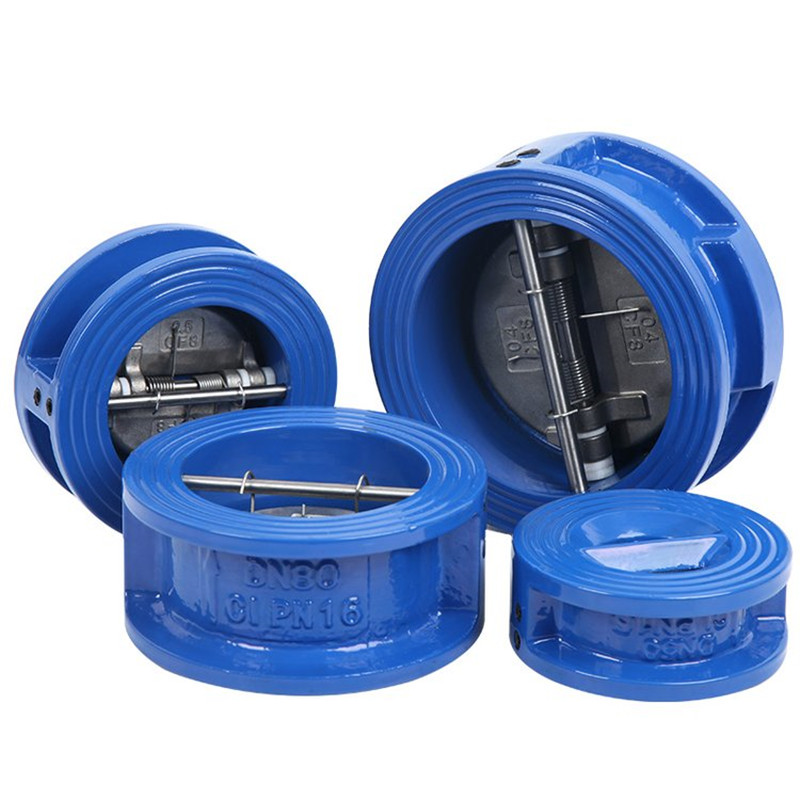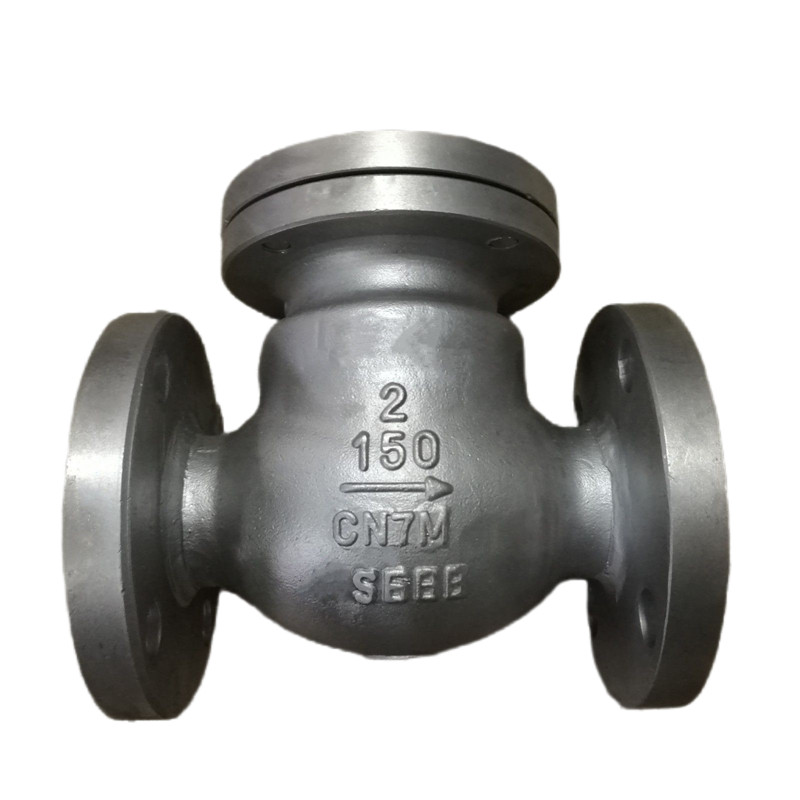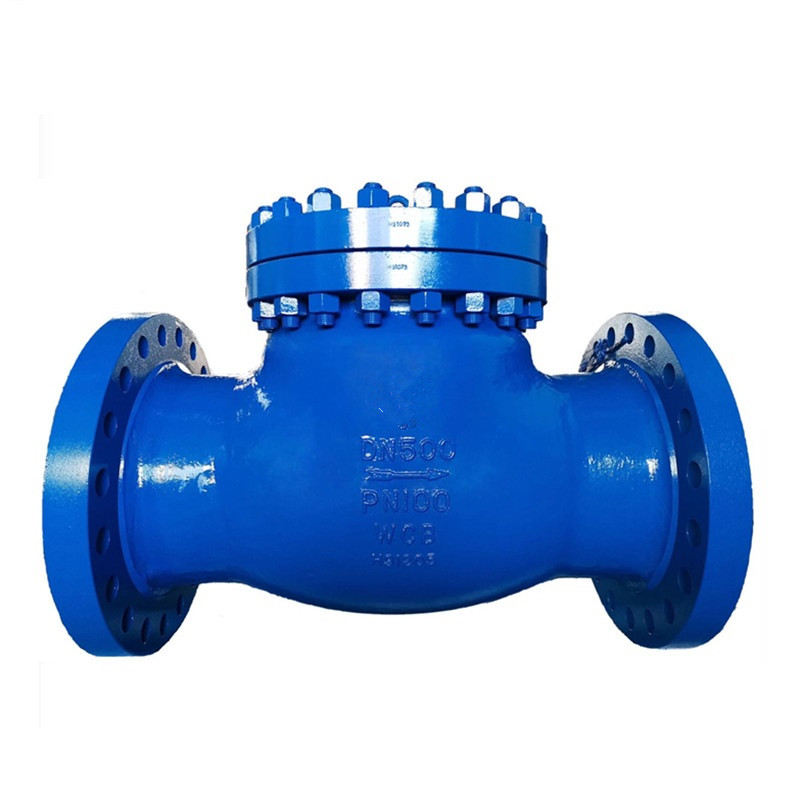Products
900LB Bolt Bonnet Swing Check Valve
Swing Check Valve, Ansi Class 900Lbs, Api 6d, Bs1868, Bolted, Pressure Sealing Bonnet, Flanged, Rf, Rtj, Bw Ends, Carbon Steel, Stainless Steel, Duplex Steel Swing Check Valves, Non Return Valve, Industrial Cast Steel High Pressure Swing Check Valve Supplier, Exporter.
- Bonnet: Bolted bonnet or pressure seal bonnet
- Integral body seat or renewable seat ring
- Uni-directional
- Swing type disc
- Casting disc (above 4”) or forged disc ( 2” to 4”)
- Non full opening or full opening disc
- Piggable for API 6D type
- Lifting lug for 4” and above
- The swing check valves are used as check valves for oil & gas, petrochemical, power, offshore and other demanding applications. These valves will not allow the flowing of the fluid in reverse direction than that indicated by the arrow. A wide choice of shell and trim materials do cover the whole range of applications, from the every-day type of non-corrosive service to critical service with highly aggressive media.
Design Standard: BS 1868 or API 6D
Pressure-temperature Ratings: ASME B16.34
Size Range: 2” to 48”
Pressure Range: Class 150 to 2500
End Connections: Flanged RF, RTJ, FF, Butt Weld
Bonnet: Bolted or pressure seal bonnet
Flanged End Dimensions: ASME B16.5 (≤24”), ASME B16.47 Series A or B (>24”)
Butt Weld End Dimensions: ASME B16.25 Face to Face
Face to Face Dimensions: ASME B16.10
Inspection and Testing: API 598, API 6D
Body Materials: WCB, CF8, CF3, CF3M, CF8M, CF8C, A995 4A, 5A, 6A, C95800, INCONEL 625, INCONEL 825, MONEL, WC6, WC9, LCB, LCC.
Trim Materials: 1#, 5#,8#,10#,12#,16#
Bolting Materials: ASTM A193 B7, B7M, B8, B8M / ASTM A194 2H, 2HM, 8, 8M.
NACE MR0175
Optional
API 6D Full Opening Port
Cryogenic Testing
PTFE coated bolts & nuts
Zinc coated bolts & nuts
Product Introduction
Check valve is a one-way valve allowing fluid to flow through one opening and leave through the other. The general purpose of this valve is to prevent backflow (flow in the opposite direction). Check valves inherit the term “cracking pressure”. When the cracking pressure is reached, the valve will open. When the pressure drops below the cracking pressure and/or back-pressure occurs, the valve closes. The way a Check valve operates is ideal for preventing contamination from fluid flowing into separate services connected to a common header. This valve works automatically, and typically with no human or external control, such as a valve handle or stem. Check valves have different configurations with the most common being the swing, tilting-disc, wafer, lift, and stop-check valves.







